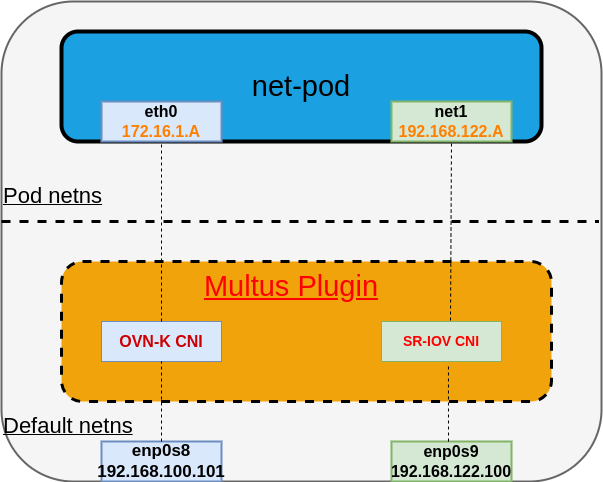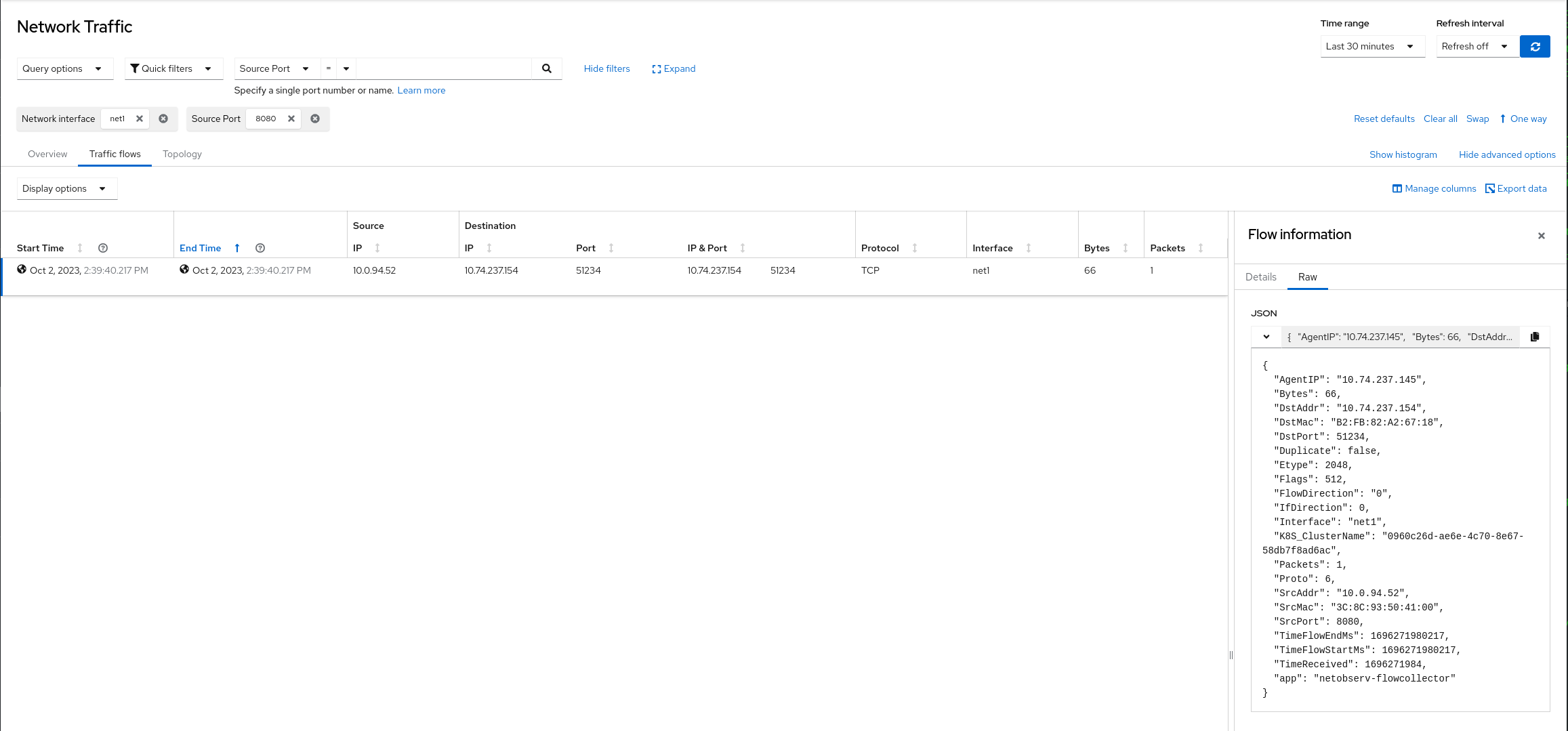Network Observability secondary interface support
Update
Check out the revised version of this post on the Red Hat blog: Network Observability secondary interface support.
Network observability for secondary interfaces with Multus and SR-IOV plugins in Kubernetes can be a complex task, but it's crucial for monitoring and troubleshooting network issues in a Kubernetes cluster.
Overview of how you can achieve network observability for secondary interface

-
Multus CNI Plugin: Multus is a CNI (Container Network Interface) plugin for Kubernetes that allows you to attach multiple network interfaces to pods. In Openshift Multus is used to attach SR-IOV vfs to your pods. For reference and more details about Multus CNI please refer to Multus OCP documentation
-
SR-IOV Plugin: SR-IOV (Single Root I/O Virtualization) is a technology that enables the partitioning of a single PCIe network adapter into multiple virtual functions (VFs). Pods can then use these VFs as secondary network interfaces, achieving higher network performance and isolation. For reference and more details about SR-IOV pls refer to SR-IOV OCP documentation
Network observability eBPF agent enhancements to support the secondary interface
To ensure network observability for secondary interfaces in this setup, and make the eBPF agent network namespace aware, eBPF agents need to implement the following steps:
-
Using fsNotify Package: Utilize the fsNotify package to be notified when new network namespaces are created. This allows the eBPF agent to keep track of network namespace creation events.
-
Using netlink Package: Employ the netlink package to register when the network interfaces are created or deleted within each network namespace. This will enable the eBPF agent to monitor the interface changes on a per-namespace basis.
-
Attach/Detach eBPF TC Hooks: Add support to the eBPF agent to attach and detach eBPF Traffic Control (TC) hook for network interfaces in non-default network namespaces. This step is crucial for monitoring and controlling network traffic within these network namespaces.
Configuring SR-IOV objects
- Install the SR-IOV operator in the environment.
- Identify the SR-IOV capable device on the node.
- Label the node which has SR-IOV interface with the label
feature.node.kubernetes.io/network-sriov.capable=true - Create the
SriovNetworkNodePolicyobject
apiVersion: sriovnetwork.openshift.io/v1
kind: SriovNetworkNodePolicy
metadata:
name: mypolicy
namespace: openshift-sriov-network-operator
spec:
resourceName: netdeviceresource
nodeSelector:
feature.node.kubernetes.io/network-sriov.capable: "true"
priority: 99
numVfs: 50
nicSelector:
pfNames: ["ens7f0np0#25-49"]
deviceType: netdevice
- Create the
SriovNetworkobject. This will create net-attach-def in theopenshift-sriov-network-operatornamespace.
apiVersion: sriovnetwork.openshift.io/v1
kind: SriovNetwork
metadata:
name: sriov-test
namespace: openshift-sriov-network-operator
spec:
resourceName: netdeviceresource
networkNamespace: test
ipam: '{ "type": "static", "addresses": [{"address": "192.168.122.71/24"}]}'
- Create a test pod using the
SRIOVNetworkobject created above and denoted by annotation,k8s.v1.cni.cncf.io/networks: "sriov-test"
apiVersion: v1
kind: Pod
metadata:
name: httpd-2
namespace: openshift-sriov-network-operator
labels:
app: sriov
annotations:
k8s.v1.cni.cncf.io/networks: "sriov-test"
spec:
containers:
- name: httpd
command: ["sleep", "30d"]
image: registry.redhat.io/rhel8/support-tools
ports:
- containerPort: 8080
securityContext:
allowPrivilegeEscalation: false
seccompProfile:
type: RuntimeDefault
capabilities:
drop:
- ALL
Configuring the network observability operator to work with SR-IOV
-
Deploy the network observability operator.
-
Create the
FollowCollectorobject withprivilegedset totrue.
apiVersion: flows.netobserv.io/v1beta1
kind: FlowCollector
metadata:
name: cluster
spec:
agent:
type: EBPF
ebpf:
privileged: true
Network observability operator will deploy it's components (eBPF agent, flowlogs pipeline and console plugin), the eBPF agent will start discovering all the interfaces and attach the eBPF hooks, flows start being collected
Sample Network observability raw flow output by filtering on Pod VF interface net1
By opening the console plugin and looking in the Traffic Flows table and filter by
Network interface name == net1 like the following for TCP flow
packets as an example

Feedback
NetObserv is an open source project available on github. Feel free to share your ideas, use cases or ask the community for help.
